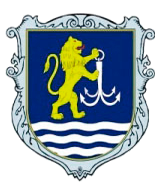IMPACT OF DIMENSIONAL MODERNIZATION ON THE GEOMETRIC CHARACTERISTICS OF A PASSENGER SHIP
Abstract
Modernization is one of the ways to increase the competitiveness of shipping companies, in particular those that conduct sea cruise business. For marine cruise ships, the life cycle of which is more than thirty years, it is typical to carry out modernization works, one of the special directions of which is to increase the length of the ship due to the addition of an additional hull insert. When implementing this project, we get a ship with its own updated (different from the prototype ship) technical, operational, and economic characteristics, which requires additional research into seaworthiness and energy supply. The life cycle of the passenger fleet, unlike the commercial fleet, is characterized by a much higher cost and duration, therefore the strategy of its modernization should have special approaches and directions. The work proposes an improved structure of directions for carrying out the modernization of passenger ships, which focus on hull renovation, conversion, conversion of ship engineering systems and complexes, and in-ship architecture. An analysis of the factors influencing the calculation of the tonnage, draft, and fullness coefficients of ships with the addition of a cylindrical insert was carried out. The method of determining dimensionless coefficients of completeness has been improved, which consists in ensuring the minimum height of the freeboard in accordance with the requirements of the International Convention on Cargo Marking. A quantitative assessment of the impact of lengthening ships on their geometric characteristics was performed using the example of candidate ships for dimensional modernization.





